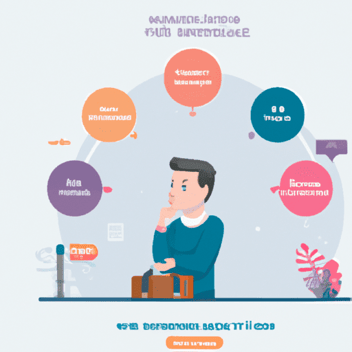Viaggio dell'acquirente: I migliori contenuti per la fase decisionale
Benvenuti nella fase finale del percorso dell'acquirente: la fase della decisione. I potenziali clienti hanno confrontato le caratteristiche, valutato le opzioni e ora si trovano di fronte all'ultimo ostacolo: scegliere VOI. Questa è la fase decisionale del buyer's journey, un momento di svolta in cui i contenuti giusti possono suggellare l'accordo.
Capire il percorso dell'acquirente: Fase decisionale
La fase decisionale del buyer's journey rappresenta la fase conclusiva in cui i potenziali clienti sono pronti ad acquistare. È il momento in cui le loro ricerche, considerazioni e valutazioni culminano nel processo decisionale finale. La comprensione di questa fase è fondamentale per le aziende che intendono adattare le proprie strategie in modo efficace, assicurandosi di soddisfare le esigenze specifiche del pubblico in questo momento critico.
In questa fase, il potenziale acquirente non sta più esplorando le opzioni, ma è sul punto di agire. L'importanza della fase decisionale risiede nella sua natura trasformativa, in quanto segna il passaggio da prospect a cliente. Le aziende devono riconoscere la mentalità unica dei consumatori in questa fase, caratterizzata dal desiderio di chiarezza, rassicurazione e informazioni dettagliate che li guidino verso la scelta ottimale.
Il ruolo dei contenuti
Fornire informazioni approfondite
I contenuti sono fondamentali nella fase decisionale in quanto offrono informazioni complete e dettagliate. Post di blog, guide ai prodotti e articoli di confronto sono risorse preziose che rispondono alle domande degli acquirenti. Il contenuto deve chiarire come il prodotto o il servizio si allinea alle esigenze dell'acquirente e facilita il suo processo decisionale.
Creare fiducia e sicurezza
Nella fase di decisione, la fiducia diventa un fattore decisivo. I contenuti possono essere utilizzati per creare fiducia mostrando testimonianze, recensioni e casi di studio. Gli acquirenti sono più propensi a convertirsi quando vedono esempi reali di altre persone che hanno superato con successo il processo decisionale. Questo non solo infonde fiducia, ma rafforza anche la credibilità del marchio o del prodotto.
Facilitare il processo decisionale
I contenuti interattivi, come i tour interattivi dei prodotti o le dimostrazioni dal vivo, possono coinvolgere l'acquirente e aiutarlo a visualizzare la sua esperienza con il prodotto. Questo non solo fornisce una comprensione più coinvolgente, ma aiuta anche a consolidare la scelta dell'acquirente.
I migliori contenuti per la fase decisionale
Creare contenuti che rispondano alle esigenze e alle richieste uniche degli acquirenti in questa fase è fondamentale per le aziende che vogliono ottenere conversioni. Esploriamo tre potenti tipi di contenuti che brillano di più nella fase decisionale, fornendo preziosi insight e facilitando scelte informate.
1. Testimonianze, recensioni e casi di studio
Testimonianze, recensioni e casi di studio esercitano un'influenza immensa nella fase di decisione. In questa fase, i potenziali clienti cercano rassicurazioni e prove tangibili che il prodotto o il servizio in questione mantiene le sue promesse. Le testimonianze dei clienti soddisfatti forniscono un tocco umano, offrendo racconti autentici di esperienze positive.
L'88% dei marketer B2B afferma che i casi studio sono il contenuto più efficace per generare contatti.
Le testimonianze fungono da prova sociale, dimostrando che altri hanno superato con successo il processo decisionale e sono ora clienti soddisfatti. Contribuiscono a creare fiducia e credibilità, sciogliendo i dubbi dei potenziali acquirenti. Quando un potenziale cliente vede qualcuno con un'esigenza o una sfida simile che esprime soddisfazione, rafforza la convinzione che il prodotto o il servizio sia una scelta affidabile.
Le recensioni sul sito web dell'azienda, sulle piattaforme di recensioni di terze parti o sui social media svolgono un ruolo fondamentale nella formazione delle percezioni. I potenziali clienti spesso si basano sulle esperienze dei loro pari per valutare le prestazioni, l'affidabilità e il livello di soddisfazione associati a un prodotto o servizio. Le recensioni positive possono essere persuasive, mentre le aziende devono affrontare e gestire in modo proattivo i feedback negativi per attenuare le preoccupazioni.
I casi di studio portano avanti il concetto di testimonianza fornendo una narrazione dettagliata del percorso di un cliente. Mostrano le sfide specifiche affrontate, le soluzioni implementate e i risultati positivi ottenuti. Questa esplorazione approfondita aiuta i potenziali acquirenti a immaginare la propria storia di successo, rendendo i casi di studio uno strumento potente per le aziende che vogliono influenzare le decisioni.
2. Tour dei prodotti e dimostrazioni dal vivo
I contenuti interattivi si distinguono nella fase decisionale perché offrono ai potenziali acquirenti un'esperienza pratica e coinvolgente. I tour dei prodotti e le dimostrazioni dal vivo offrono ai clienti un modo dinamico per esplorare le caratteristiche e i vantaggi di un prodotto o di un servizio in tempo reale.
I tour dei prodotti consentono ai potenziali acquirenti di esplorare virtualmente le funzionalità e l'interfaccia utente del prodotto. Questa esperienza interattiva fornisce una comprensione più approfondita delle capacità del prodotto, aiutando gli utenti a immaginare come esso possa rispondere alle loro esigenze. Le aziende possono guidare gli utenti attraverso le caratteristiche principali, evidenziare i punti di vendita unici e rispondere alle preoccupazioni più comuni in modo visivamente convincente.
Che si tratti di webinar, eventi virtuali o sessioni individuali, le dimostrazioni dal vivo creano uno spazio interattivo in cui i potenziali clienti possono porre domande e ricevere risposte immediate. Questa interazione in tempo reale crea un legame e consente alle aziende di mostrare efficacemente la proposta di valore del prodotto. Le dimostrazioni dal vivo sono particolarmente efficaci per prodotti o servizi complessi che necessitano di una spiegazione dettagliata.
Il 67% degli acquirenti B2B è più propenso ad acquistare dopo aver assistito a una dimostrazione dal vivo del prodotto.
I contenuti interattivi educano e mettono in grado i potenziali acquirenti di prendere decisioni più informate. Fornisce un'esperienza tangibile che va oltre le informazioni statiche, aiutando gli utenti a valutare il prodotto in modo più dinamico e personale. Ciò può ridurre significativamente l'incertezza e contribuire a rendere più fluido il processo decisionale.
3. Articoli di blog, guide ai prodotti e articoli di confronto
I contenuti informativi sotto forma di articoli di blog, guide ai prodotti e articoli di confronto costituiscono una preziosa bussola per i potenziali acquirenti che si trovano nella fase di decisione. Questi tipi di contenuti forniscono informazioni dettagliate, rispondono a domande specifiche e guidano gli acquirenti verso scelte ben informate.
Articoli di blog educativi
Gli articoli di blog che approfondiscono le specifiche di un prodotto o di un servizio possono essere determinanti nel processo decisionale. Questi articoli possono trattare vari argomenti, dalle caratteristiche approfondite del prodotto alle istruzioni per l'uso e alle best practice. Fornendo informazioni preziose, le aziende si posizionano come autorità nella loro nicchia e offrono un hub di risorse per i potenziali acquirenti in cerca di informazioni dettagliate.
Guide di prodotto complete
Le guide ai prodotti vanno oltre le informazioni di superficie, offrendo un'immersione profonda nelle complessità di un prodotto. Possono includere specifiche dettagliate, casi d'uso e consigli pratici per ottimizzare le prestazioni del prodotto. Una guida al prodotto ben realizzata è una risorsa fondamentale per i potenziali acquirenti alla ricerca di informazioni complete che li aiutino nel processo decisionale.
Articoli strategici di confronto
Gli articoli di confronto, che mettono il prodotto o il servizio a confronto con i concorrenti, aiutano i potenziali acquirenti a valutare le opzioni in modo obiettivo. Questi articoli evidenziano i principali elementi di differenziazione, i vantaggi e i potenziali svantaggi, aiutando i clienti a ponderare meglio le loro scelte. Gli articoli di comparazione strategica guidano gli acquirenti verso una decisione, presentando un quadro chiaro di come l'offerta si colloca rispetto alle alternative presenti sul mercato.
Il 54% degli acquirenti sceglie di acquistare online per la possibilità di confrontare in modo efficiente.
Gli articoli di blog, le guide ai prodotti e i pezzi di comparazione contribuiscono collettivamente al processo decisionale dell'acquirente, fornendo le informazioni necessarie per una valutazione approfondita delle opzioni. Questi tipi di contenuti forniscono ai potenziali acquirenti le conoscenze necessarie per fare una scelta in linea con le loro esigenze e preferenze specifiche.
Suggerimenti sui contenuti per la fase decisionale
Quando blogger e creatori di contenuti iniziano a creare contenuti per la fase decisionale, è fondamentale comprendere l'importanza di questa fase cruciale del percorso dell'acquirente. La fase decisionale segna il culmine dell'esplorazione di un potenziale cliente, in cui si passa dal considerare le opzioni alla scelta finale. Riconoscere questo cambiamento di mentalità consente ai blogger di creare contenuti che rispondano in modo preciso alle esigenze e alle richieste uniche che emergono durante questa fase cruciale.
A questo punto, i potenziali clienti non assorbono più passivamente le informazioni, ma cercano attivamente rassicurazioni e conferme. La mentalità è caratterizzata dal desiderio di chiarezza, di informazioni dettagliate e di fiducia per prendere una decisione ben informata. I blogger devono comprendere queste sfumature per creare contenuti che risuonino, fornendo il supporto e la guida necessari in questo viaggio decisivo.
Titoli del blog per i contenuti della fase decisionale
-
Titoli che attirano l'attenzione: I titoli che attirano l'attenzione sono la porta d'accesso per catturare l'interesse dei potenziali acquirenti nella fase decisionale. I blogger devono riconoscere l'importanza di creare titoli avvincenti e in risonanza con le preoccupazioni e le aspirazioni specifiche del pubblico in questa fase critica. Il titolo è la prima impressione e deve invogliare i lettori ad approfondire il contenuto per ottenere informazioni preziose.
-
Esempi di titoli efficaci:
-
Elevare l'ufficio di casa: Scegliere la sedia ergonomica perfetta per il massimo comfort
-
Tecnologia scatenata: Una guida completa per la scelta del sistema domestico intelligente ideale
-
Rivoluziona il tuo percorso di fitness: La guida definitiva alla scelta dell'attrezzatura perfetta per la palestra domestica
-
-
Strategie SEO: Integrare le strategie SEO nella creazione dei titoli è fondamentale per migliorare la visibilità. I blogger devono dare priorità alle parole chiave pertinenti, posizionandole strategicamente per attirare il traffico di ricerca organico. La creazione di meta-titoli e descrizioni che si allineino con le query più comuni della fase decisionale assicura ulteriormente che il contenuto sia individuabile dai potenziali acquirenti che cercano attivamente soluzioni.
Domande chiave a cui rispondere nei contenuti della fase decisionale
Il fondamento di un contenuto efficace per la fase decisionale risiede nell'identificazione delle domande chiave che turbinano nella mente dei potenziali acquirenti. I blogger devono condurre una ricerca approfondita per comprendere le domande che sorgono comunemente in questa fase. L'individuazione di queste domande sulle caratteristiche del prodotto, sui prezzi o sul confronto con le alternative informa il processo di creazione dei contenuti.
Una volta identificate le domande, i content marketer devono integrare le soluzioni nei loro contenuti. Che si tratti di spiegazioni dettagliate, supporti visivi o esempi reali, i contenuti devono fungere da hub di risorse che rispondono direttamente alle preoccupazioni dei potenziali acquirenti. Fornendo soluzioni, i blogger diventano guide fidate, promuovendo un senso di affidabilità e competenza.
Le preoccupazioni legate al processo decisionale possono andare dal timore di fare la scelta sbagliata alle incertezze sulle esperienze successive all'acquisto. I blogger devono anticipare e affrontare queste preoccupazioni. Incorporare testimonianze, storie di successo e consigli pratici nei contenuti aiuta ad alleviare i timori, guidando i potenziali acquirenti verso decisioni in linea con le loro preferenze ed esigenze.
Ecco alcune domande comuni che i potenziali clienti pongono nella fase di decisione:
-
Domanda:"Come si colloca questo prodotto/servizio rispetto alle alternative presenti sul mercato?".
-
Risposta: La nostra guida completa illustra le caratteristiche principali che distinguono il nostro prodotto e fornisce un confronto diretto con i concorrenti.
-
-
Domanda:"Quali vantaggi specifici offre questo prodotto e come può soddisfare le mie esigenze specifiche?".
-
Risposta: Scoprite come il nostro prodotto risponde alle vostre esigenze con approfondimenti sulle sue funzionalità, assicurandovi di prendere una decisione informata e in linea con le vostre preferenze.
-
-
Domanda:"Posso vedere esempi reali di persone che hanno utilizzato con successo questo prodotto o servizio?".
-
Risposta: Immergetevi nella nostra raccolta di casi di studio e testimonianze, che forniscono esperienze di prima mano per aiutarvi a visualizzare i risultati positivi della scelta della nostra soluzione.
-
-
Domanda:"Come si inserisce questo prodotto nella mia configurazione o routine esistente?".
-
Risposta: Approfondite la nostra guida sulle possibilità di integrazione, mostrando come il nostro prodotto possa diventare parte integrante della vostra attuale configurazione.
-
-
Domanda:"Quali costi aggiuntivi devo considerare, come quelli di manutenzione o di abbonamento?".
-
Risposta: Scoprite il quadro completo dei costi con la nostra ripartizione delle potenziali spese aggiuntive, garantendo la trasparenza e aiutandovi a pianificare di conseguenza.
-
-
Domanda:"Sono disponibili diverse versioni o pacchetti e come faccio a scegliere quello giusto per me?".
-
Risposta: Navigate attraverso la nostra guida alle opzioni del prodotto, che vi aiuterà a comprendere le caratteristiche di ciascuna versione e a scegliere quella che si adatta perfettamente alle vostre esigenze.
-
-
Domanda:"Posso personalizzare o adattare il prodotto per soddisfare meglio le mie preferenze?".
-
Risposta: Scoprite le possibilità di personalizzazione nella nostra guida approfondita, per assicurarvi di capire come il nostro prodotto può essere adattato per soddisfare le vostre preferenze uniche.
-
Decisioni efficaci: Navigazione nel percorso di conversione
La creazione di contenuti per la fase decisionale guida i potenziali acquirenti e presenta preziose opportunità di conversione per le aziende. Quando i creatori di contenuti sviluppano contenuti per questa fase, aprono la strada ai lettori per passare senza problemi dalla considerazione alla decisione di agire e acquistare.
Riconoscendo il potenziale di conversione all'interno di contenuti accuratamente curati come blog, casi di studio e dimostrazioni di prodotti, le aziende possono trasformare l'interesse casuale in relazioni impegnate con i clienti, favorendo la crescita e il successo nel panorama dinamico del buyer's journey.
Questo contenuto è disponibile in:
- Tedesco: Die Buyer's Journey: die besten Inhalte für die Entscheidungsphase
- Inglese: The Buyer's Journey: Best Content for the Decision Stage
- Spagnolo: El Buyer's Journey: El mejor contenido para la fase de decisión
- Francese: Parcours de l'acheteur: Le meilleur contenu pour l'étape de décision
- Rumeno: Călătoria cumpărătorului: Cel mai bun conținut pentru etapa de decizie
- Cinese: 买家之旅:决策阶段的最佳内容











Facci sapere cosa ne pensi.